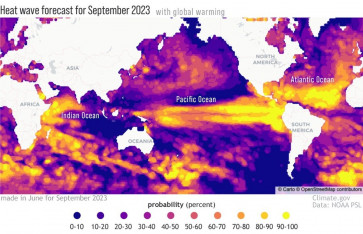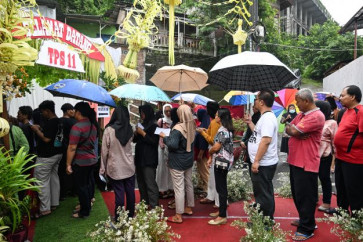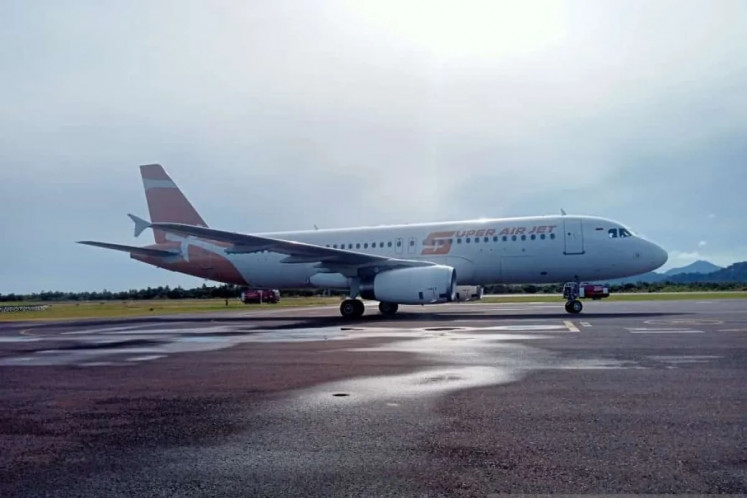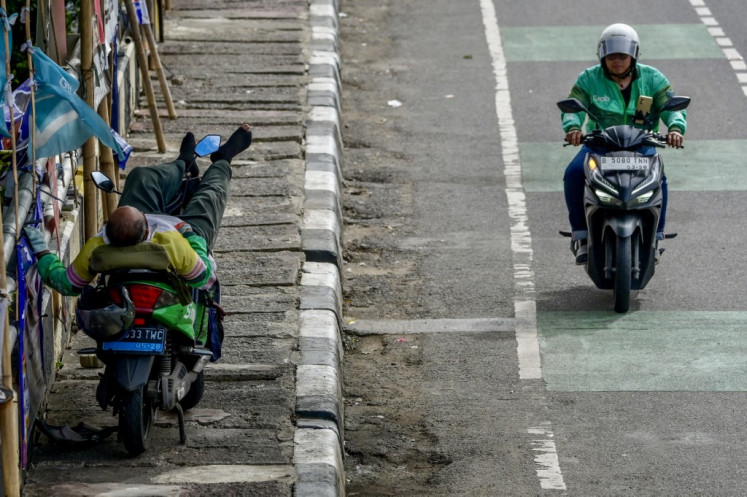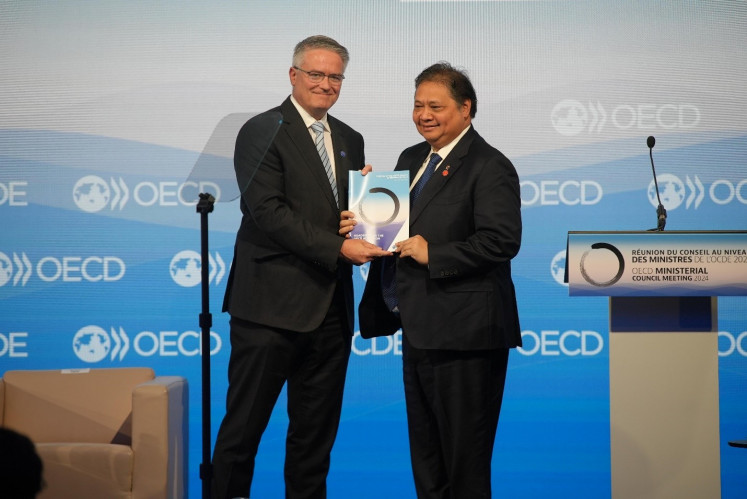Analysis: Pertamina to receive Rp 3.37 trillion in state capital injection
State-owned energy company PT Pertamina has quietly received a state capital injection (PMN) of Rp 3.37 trillion (US$40.47 billion), based on a presidential regulation (PP) signed on Oct. 3. Pertamina has received this PMN to fortify the state-owned enterprise's (SOE) capital structure as well as to fund the capacity of its business activities.
Change Size
 An attendant walks across a gas station belonging to state-owned energy holding company Pertamina in Kuningan, South Jakarta. (JP/Seto Wardhana)
An attendant walks across a gas station belonging to state-owned energy holding company Pertamina in Kuningan, South Jakarta. (JP/Seto Wardhana)
S
tate-owned energy company PT Pertamina has quietly received a state capital injection (PMN) of Rp 3.37 trillion (US$40.47 billion), based on a presidential regulation (PP) signed on Oct. 3. Pertamina has received this PMN to fortify the state-owned enterprise's (SOE) capital structure as well as to fund the capacity of its business activities. Interestingly, the SOE received this PMN through PP No. 48/2023 on PMN allotment to PT Pertamina. The use of the presidential regulation means that the PMN was given solely through the President's authority without getting approval by the House of Representatives.
In preparation for the inevitable criticism that this is an abuse of the President's authority, Article 2 of the PP states that the PMN consists of state-owned assets from the disbursement of the national budget (APBN) to the Energy and Mineral Resources Ministry from the year 2009 to 2017. This means that the PMN does not create any new allocation in the 2024 national budget, since it only transfers funds and assets from the APBN of prior years that were already allocated.
A breakdown of the regulation reveals that roughly 45.8 percent, or Rp 1.55 trillion, of the PMN came from the energy ministry's natural gas distribution network that formerly belonged to the Oil and Gas Directorate General. The remaining 54.2 percent, Rp 1.83 trillion, of the PMN came from state-owned gas stations and supporting infrastructure.
Pertamina, as one of the main actors in Indonesia's energy transition initiatives, has undertaken numerous large-scale projects, from developing Indonesia's new and renewable energy industry to developing the electric vehicle (EV) infrastructure. Naturally, this means that the SOE requires large amounts of capital to implement these projects.
One issue, however, is that this additional PMN came only a month after the Finance Ministry had approved the allocation of Rp 42.8 trillion in the APBN 2023-2024 to five SOEs, with Rp 1.5 trillion to PT Sarana Multigriya Finansial (SMF), Rp 28.8 trillion to Hutama Karya, Rp 1.7 trillion to PT Len Industri, Rp 10 trillion to PLN and Rp 659.1 billion to AirNav Indonesia (LPPNPI).
Among those five SOEs, Hutama Karya is particularly contentious as numerous news outlet have covered the troubled construction company and its repeated failure to pay its debt.
The public's general perception of PMNs has shifted to the belief that they are used primarily to bail out failing SOEs. This sentiment has been compounded by recent news, namely coverage of the Pertamina Balikpapan Refinery expansion project, which reached a massive 30 percent cost overrun due to management and organizational issues. This has created an impression among the public that the PMN is more likely to be used for paying off cost overruns than to fund business expansion.
What’s more
Yet Pertamina does have ongoing projects that are undeniably capital intensive. Among them is the project to mix Pertalite with Ethanol 7 percent and create Pertamax Green 92, essentially creating a fuel product with a lower octane fuel content. Pertamina president director and CEO Nicke Widyawati explained that Pertalite is categorized as RON 90, whereas Pertamax Green 92 will be categorized as RON 92. In accordance with the government initiative for energy transition, the primary subsidized fuel would change from Pertalite to Pertamax Green 92 if this project is successful.
While this change would be a significant step toward the energy transition and help the country reach its sustainability commitments, there are questions regarding the commercial viability of this change. One of the necessary ingredients to produce Ethanol 7 percent is sugar, which Indonesia has been a heavy importer of. According to Statistics Indonesia (BPS), Indonesia has already imported around 3.5 million tonnes of sugar this year just from January to August.
What we’ve heard
Sources within the Energy and Mineral Resources Ministry state that the government's plan to replace Pertalite gasoline with Pertamax Green 92 is triggered by the swelling subsidies for fuel. The government is concerned that Pertalite consumption exceeds the quota set for this year.
Until September 21, Pertalite consumption has already reached 66.5 percent of the 2023 quota of 32.56 million kiloliters. Pertamina is taking every possible measure to prevent subsidized Pertalite fuel from being depleted.
That's why Pertamina is considering two options: replacing Pertalite with 92-octane gasoline or launching 95-octane fuel. With the green energy concept, Pertamina aims for the former and launch 92-octane fuel as the subsidized product replacing Pertalite.
"However, all of this is still awaiting approval from the House of Representatives (DPR)," said one source. The government itself, he continued, has not reached a consensus on this plan. The green fuel concept promoted by Pertamina could potentially not be ready for commercializatioin.
The scheme to be pursued is similar to the model that eliminated Premium, which involves increasing Pertalite supply. However, Pertamina currently needs to increase the 92-octane gasoline supply and gradually reduce Pertalite supply.
"Because if it (Pertalite) is eliminated immediately, it will cause panic among the public," said the source. Moreover, the main point is to reduce fuel subsidies. That's why several gas stations have started limiting Pertalite sales gradually.
The plan is to mix 90-octane gasoline with 7 percent Ethanol to produce 92-octane fuel. However, another source mentioned that the availability of ethanol for this program might not be sufficient.
Disclaimer
This content is provided by Tenggara Strategics in collaboration with The Jakarta Post to serve the latest comprehensive and reliable analysis on Indonesia’s political and business landscape. Access the latest edition of Tenggara Backgrounder to read the articles listed below:
Politics
- Hunter becomes hunted in Indonesia’s antigraft campaign
- Fears new State Civil Apparatus Law will revive TNI dual-functon
- Indonesia continues to tackle wildfires as pressure mounts
- Economic considerations in developing primary weapons system
Business and Economy
- Govt to tighten import of select goods to restructure domestic trade
- Bank Mandiri ditches AXA Insurance stake over unfavorable returns
- Acting agriculture minister faces rice import problem



